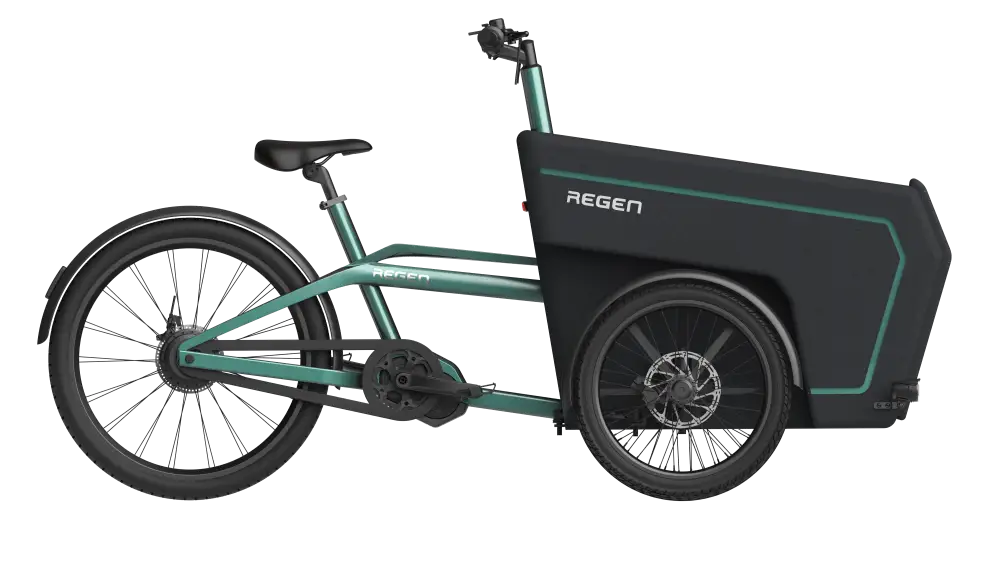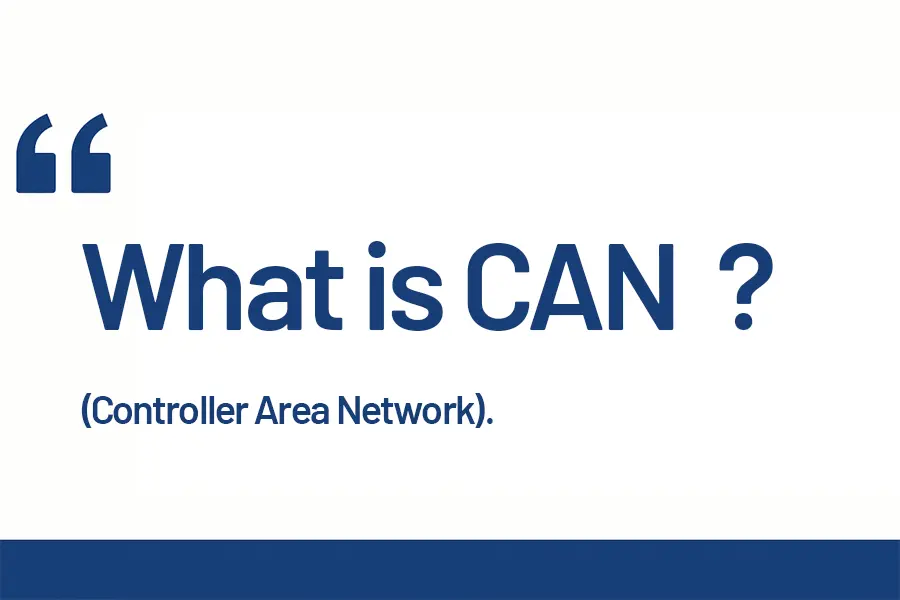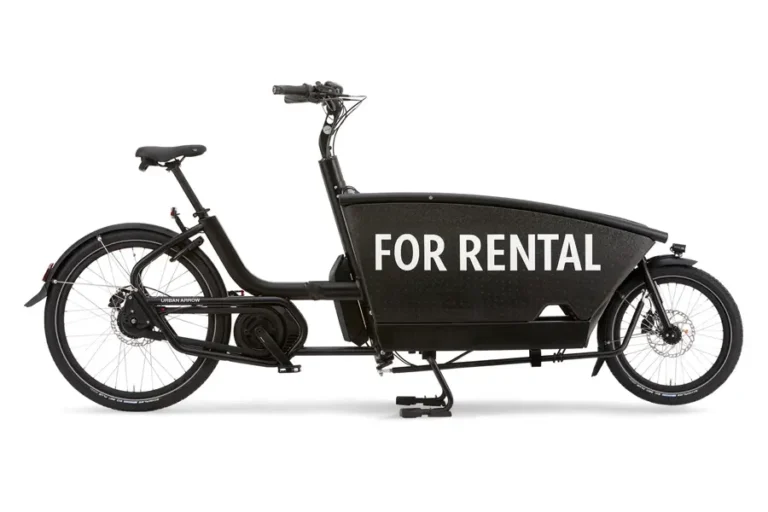Az akkumulátorok, érzékelők és egyéb eszközök okosabb csatlakoztatása
Bevezetés: Miért fontos a digitális kommunikáció a modern e-kerékpárokban?
Mint Regen, elköteleztük magunkat a teherszállító e-bike-ok tervezése mellett, amelyek nem csak jól vezethetők - hanem think nos. És ahogy a kerékpárok fejlődnek, és intelligens kijelzőket, precíziós nyomatékérzékelőket, GPS-követést, IoT-kapcsolatot és akkumulátor-kezelő rendszereket (BMS) tartalmaznak, a robusztus kommunikációs protokoll iránti igény tagadhatatlanná válik.
Ez az a hely, ahol CAN busz belép a képbe.
A CAN Bus (Controller Area Network) több mint egyszerű kábelezés, a CAN busz (Controller Area Network) egy digitális kommunikációs protokoll, amely lehetővé teszi, hogy az e-bike összes kulcsfontosságú elektronikus alkatrésze - vezérlő, akkumulátor, kijelző, motor, szenzorok... közös hálózaton keresztül beszélnek egymással. Ebben a cikkben elmagyarázzuk:
- Mi a CAN Bus
- Hogyan hasonlít az UART-hoz
- Miért elengedhetetlen a modern e-kerékpárokhoz és különösen a teherbiciklik
- Valós alkalmazások és integrációs megfontolások
- Előnyök, hátrányok és jövőbeli kilátások
Hogy megtudja, mi a kommunikációs protokollok az E-Bike elektromos rendszerekben ? Kattintson ide az átfogó útmutatóért
Mi az a CAN Bus? (Vezérlőhálózat)
Gyors meghatározás
CAN busz (vezérlőhálózat) egy többmesteres, üzenetalapú protokoll, amelyet eredetileg autóipari alkalmazásokhoz terveztek. Lehetővé teszi több elektronikus vezérlőegység (ECU) egyetlen pár sodrott vezetéken keresztül kommunikálni központi számítógép nélkül.
Az e-kerékpárok esetében ezek az ECU-k a következők lehetnek:
| Eszköz | Szerepvállalás |
|---|---|
| Akkumulátor BMS | Figyeli a töltést/kisülést, a hőmérsékletet, az egészségi állapotot. |
| Motorvezérlő | Végrehajtja a pedálsegéd logikát, a gázreakciót |
| Kijelző egység | Kapcsolódik a vezetőhöz; mutatja a sebességet, a hatótávolságot, a hibakódokat. |
| Érzékelők (nyomaték, sebesség) | Valós idejű bemenet a motortámogatás vezérléséhez |
| GPS/IoT egység (ha van) | Helymeghatározást, diagnosztikát, flottakezelést biztosít |
Ahelyett, hogy az egyes eszközök között külön-külön vezetékek futnának (mint az analóg vagy UART beállításoknál), a CAN busz lehetővé teszi, hogy minden komponensnek ugyanazt az adatvezetéket kell használnia, csökkentve a komplexitást és növelve a megbízhatóságot.


Csak 20 MOQ kerékpár a kezdéshez
Testreszabható E-Cargo kerékpár - RS01
Akár egy növekvő márka, akár egy szomszédos üzlet, nagy teherbírású teherbiciklijeink jelentik az Ön belépőjegyét a környezetbarát szállítás virágzó világába. Induljunk!
UART vs CAN busz: Mi a különbség?
UART (univerzális aszinkron vevő-továbbító) egy másik népszerű protokoll az e-kerékpár rendszerekben. Ez egyszerűbb és olcsóbb, de korlátozottabb a hatókörében.
Íme, hogyan hasonlítják össze őket:
| Jellemző | UART | CAN busz |
|---|---|---|
| Kommunikáció típusa | Pont-pont (1:1) | Több csomópontos hálózat (sok:sok) |
| Hibaérzékelés | Alap (paritásbitek) | Robusztus (CRC, ACK, újbóli próbálkozások) |
| Kábel bonyolultsága | Több vezeték, készülékenként | 2 vezetékes megosztott busz |
| Skálázhatóság | Korlátozott | Magas - könnyen hozzáadhat további csomópontokat |
| Sebesség | Általában lassabb (9600-115200 bps) | Gyorsabb (akár 1 Mbps) |
| Használati eset | Alap e-bringák | Fejlett/cargo e-bike-ok, flottarendszerek |
Regen Betekintés: A legtöbb belépő szintű ingázó e-kerékpár még mindig UART-ot használ. De a moduláris teherbringáink esetében - ahol az IoT modulok, a kettős akkumulátorcsomagok, a regeneratív fékezés és a több érzékelő gyakoriak - A CAN Bus az egyetlen skálázható megoldás.
Miért ideális a CAN Bus a teherszállító e-kerékpárokhoz
A teherbringák nem csak túlméretezett kerékpárok - ezek intelligens szállítógépek, amelyeket gyakran arra terveztek, hogy logisztika, családi mobilitás vagy kereskedelmi flották. Ezek a felhasználási esetek megkövetelik:
- Valós idejű nyomatékszabályozás nehéz terhelésekhez
- Akkumulátor állapotfigyelés kettős csomagokhoz
- GPS-követés és lopásjelzés
- Integráció a szállítási alkalmazásokkal vagy flottakezelő rendszerekkel
- Előrejelző karbantartás és hibanaplózás
Mindehhez szükség van stabil, nagy áteresztőképességű kommunikáció modulok között - pontosan ezt kínálja a CAN Bus.
Alkalmazási példa: Flotta Cargo E-Bike
Képzeljünk el egy postai vállalat által használt Regen teherbicikli flottát:
- A megjelenítés valós idejű diagnosztikát mutat a motorosnak.
- A akkumulátor BMS a túlterhelés megelőzése érdekében töltöttségi állapot- és hőmérsékleti adatokat küld.
- Egy GPS egység naplózza a tartózkodási helyet és segít az útvonal optimalizálásában.
- A vezérlő a hasznos teher, a terep és az érzékelők visszajelzései alapján állítja be a teljesítményt.
A CAN Bus segítségével az összes ilyen komponens egyetlen egységes gerinchálózaton osztja meg az adatokat - minimális késleltetéssel és maximális koordinációval.
Rendszerarchitektúra diagram
Íme egy egyszerűsített kép egy CAN Bus alapú e-kerékpár rendszerről:
+------------------+
| Display Unit |
+------------------+
|
+-------------+--------+---------+--------------+
| | | |
+--------+ +----------+ +---------+ +-----------+
| érzékelő | | | akkumulátor | | motor | | GPS/IoT |
| (pl. | | BMS | | Ctrl. | | modul |
| nyomaték)| +----------+ +---------+ +-----------+ +-----------+
\___________________________________________/
Megosztott CAN-busz (csavart páros)Ez az architektúra drasztikusan csökkenti a kábelezési zűrzavart és növeli a modularitást - megkönnyítve a javításokat, frissítéseket vagy diagnosztikát.
A CAN busz előnyei az e-kerékpárokban
| Előny | Miért fontos |
|---|---|
| Moduláris felépítés | Könnyen hozzáadható/eltávolítható komponensek (pl. új érzékelők) |
| Diagnosztika | Hibakódok leolvasása, problémák távoli naplózása |
| Skálázhatóság | Alkalmas komplex rendszerek és nagy flották számára |
| Biztonság | Túlfeszültség, túlmelegedés, elszabadult gázadás megelőzése |
| Adatnaplózás | Lehetővé teszi a prediktív karbantartást és a flottaelemzést |
| Csökkentett vezetékezés | Egyszerűsíti a keret kialakítását és javítja a vízszigetelést |
Szabványoknak való megfelelés
Az e-kerékpárok modern CAN Bus rendszerei egyre inkább összehangolódnak a autóipari biztonsági szabványokpéldául:
- ISO 11898 (CAN protokoll szabvány)
- EN 15194 (az EPAC-okra vonatkozó uniós szabvány, beleértve az elektromos biztonságot is)
- EN 50604-1 (Akkumulátor BMS kommunikáció és védelem)
Az Regen rendszereket ezen szabványok figyelembevételével tervezzük, hogy biztosítsuk a következőket Az uniós piacnak való megfelelés és a hosszú távú megbízhatóság.
Hátrányok és korlátozások
Bár a CAN Bus meggyőző előnyöket kínál, nem mentes a kompromisszumoktól:
| Korlátozás | Magyarázat |
|---|---|
| Magasabb költség | Összetettebb mikrokontrollerek és kódolás szükséges |
| Fejlesztési idő | Minden eszközön firmware-integrációt és tesztelést igényel. |
| Komponens kompatibilitás | Minden modulnak ugyanazt a CAN-protokollt kell használnia (pl. CiA 454 vagy egyedi). |
| Javítási nehézség | A hibák diagnosztizálásához speciális eszközökre vagy szoftverekre lehet szükség. |
Ezeket a hátrányokat azonban nagymértékben ellensúlyozzák a következők az előnyök a professzionális vagy flottaszintű alkalmazásokban.
CAN Bus az Regen Cargo E-Bike ökoszisztémájában
Az Regen-nél a CAN Bus rendszereket integráljuk a mi közép- és felső kategóriás teherbringa platformok, különösen akkor, ha:
- Az ügyfelek igénylik több akkumulátoros beállítások
- A kerékpár a következőket tartalmazza flottakezelés vagy IoT integráció
- A felhasználási eset a következőket foglalja magában nehéz rakomány, gyakori megállás/indítás, vagy igényes terep
Támogatjuk a hibrid rendszereket is - kombinálva UART (régi kijelzőegységekhez) és CAN (fejlett modulokhoz) - a CAN-hidak a kompatibilitás és a zökkenőmentes frissítések biztosítása érdekében.
Hogyan állapítható meg, hogy egy e-kerékpár CAN Bus-t használ-e?
Íme három nyom:
- Kevesebb vezeték a főbb alkatrészek összekötése (gyakran csak egy kétvezetékes buszvezeték).
- A kijelző lehetővé teszi az egész rendszerre kiterjedő diagnosztikát (nem csak motorhiba).
- Kerékpártartók firmware-frissítések vagy alkalmazásszintű felügyelet több modulon keresztül.
Az Regen-nél segítünk OEM és ODM ügyfeleinknek kommunikációs architektúrájuk egyedi megtervezése a termék ütemtervének és költségvetésének megfelelően - az egyszerű UART-tól a teljes CAN Bus intelligens kerékpárokig.
Következtetés: Okosabb kapcsolatok az okosabb kerékpárokhoz
A CAN Bus több mint egy egyszerű adatkábel - ez az alapja az intelligens, csatlakoztatott e-kerékpároknak. A családi kerékpárosok számára, akik nyugalomra vágynak, és a logisztikai szolgáltatók számára, akik működési hatékonyságot követelnek, A CAN-kompatibilis teherbringák páratlan vezérlést, diagnosztikát és frissíthetőséget kínálnak.
Az Regen-nél támogatjuk a márkákat a következők kiépítésében jövőbe mutató elektromos teherbringák rugalmas, szabványokhoz igazodó rendszertervezéssel. Ha új platformot tervez, vagy UART-ról CAN-re váltana, beszéljünk - mérnöki csapatunk készen áll arra, hogy a specifikációtól a méretarányokig segítsen.
📩 Kapcsolat a CAN Bus megoldások feltárásához a teherbicikli-projektjéhez.







